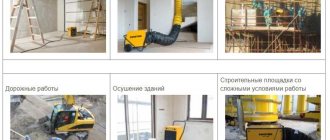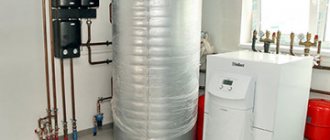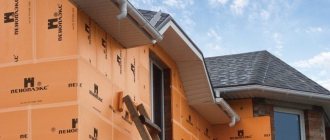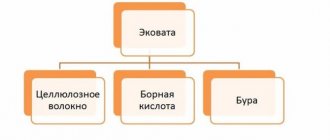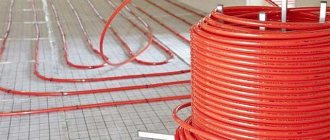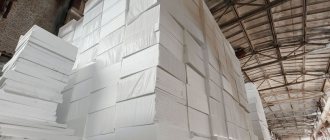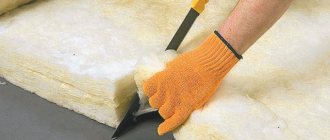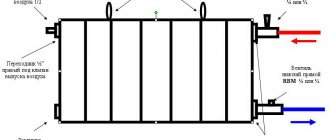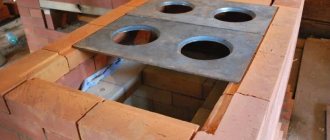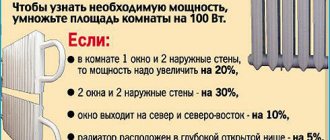It will probably be no secret to anyone that heating a room is the most important task for its owner. On the modern heating equipment market today there is a great variety of devices and devices for heating rooms. Heat guns occupy a very significant and prominent place in this range.
Unlike other types of devices for heating and drying a room, heat guns perform this operation quite quickly and efficiently. It is also worth noting that this type of device appeared relatively recently, but has already gained popularity in various areas of its use.
Therefore, in this article we will describe in detail all the characteristics of heat guns, and also talk about the areas of their application.
What is
A heat gun is essentially a fan heater, which is designed to quickly heat rooms of various sizes.
This device got its name from the fact that it is presented in the form of a metal cylinder, which in appearance resembles an ordinary cannon.
But with all this, you should not associate these two heating devices.
This is due to the fact that a heat gun differs markedly from a fan heater in the following important points:
- has a significantly directed air flow;
- has a wide power range;
- quickly heats large rooms.
Application of heat guns
These guns find their application in the following industrial and construction fields:
- They are used to dry plaster near walls.
- When heating the material of suspended ceilings
- When heating the premises of production and industrial facilities, industrial heat guns are used, respectively.
- When heating greenhouses and greenhouses.
- And, of course, some types of heat guns can be effectively used to heat residential buildings.
As a result, we can conclude that if you quickly want to warm up any residential or industrial premises, a heat gun will come in handy. They can also be well used in construction and industrial sectors. Where it is difficult or expensive to install a large heating boiler, a compact heat gun will be very useful.
Device
Heat gun device.
(Click to enlarge) As a rule, the structural elements of this device are:
- a heating element;
- powerful fan.
The heating element can be presented in the following types:
- a metal spiral made of refractory metals, for example, nichrome (the disadvantage of this type is that such elements intensively release oxygen in the room);
- heating element, which is made of sealed tubes filled with sand;
- a ceramic element, which is presented in the form of a plate with many small cells through which air passes (this type of heating element is the safest among all those presented).
It is also worth noting that the design of the heat gun is equipped with additional components, which include:
- thermostat that effectively protects the unit from overheating;
- a thermostat that will automatically turn on the heat gun when the room temperature drops below the set one.
How does a heat gun work?
Let's look at this process point by point:
- First, cold air is pumped under the action of a fan through an opening in the housing.
- The heating element generates heat, which is then blown out by a high-force air flow from the ventilation.
- Heated air is transferred into the room through the dampers.
Variety of heat guns
Benefits of use
The design and operating principle of the heat gun rightly ensure its popularity in use.
As a unit for quickly heating a room, it has the following advantages:
- easy operation;
- does not require frequent maintenance;
- works silently;
- quickly heats a room of any size;
- The environmental friendliness of use lies in the fact that the heat gun in operating mode does not emit harmful substances into the atmosphere.
One of the disadvantages of a heat gun is the cost of electricity consumption, which, in principle, can be offset by efficient heating of the room.
Pros and cons of diesel guns
If you go by user reviews, the main advantage of solar heaters is autonomy. The air heater is indispensable in situations where there are no other energy sources - main gas and solid fuel, or the electricity consumption limit is severely limited.
Reference. Compressors and fans of powerful models with a heating capacity of over 120 kW consume about 1000 W of electricity. The household series device will “wind” the meter at 200-300 W.
Other advantages of liquid fuel heaters:
- Mobility of installation and efficiency of heating organization. The time required is minimal - I bought a gun - brought it to the place - filled it with diesel fuel - turned on the heating.
- The unit is easy to move from one site to another.
- The efficiency of the heater is quite high - manufacturers claim an efficiency of about 83%.
- Warm-up speed. According to this indicator, a diesel burner outperforms electric heating elements.
- Versatility. The device is suitable for open areas and any large premises, except residential ones.
Let us clarify an interesting point regarding efficiency. Some sellers make the following claims: Indirect combustion diesel heaters are less efficient than direct combustion heaters that emit gases indoors. They say that the efficiency of these installations reaches 100%, since the heat of combustion products is not discharged to the street.
In fact, the efficiency of various guns is approximately the same, but indirect heating devices actually throw some of the heat out along with the smoke. Now open the documentation of any direct combustion heater and read the requirements for safe operation: supply and exhaust ventilation or intensive ventilation is required to remove toxic gases.
The result: direct-flow guns release all the heat into the heated room, but 20-30% of this energy is carried away by ventilation. That is, the actual losses and efficiency of both heating devices are approximately the same, although direct-flow units are cheaper than chimney models.
Disadvantages of heat generators burning diesel and kerosene:
- In terms of price, solar cannons are inferior to electrical appliances - convectors and fan heaters;
- Diesel fuel is not the cheapest energy carrier:
- operation of the heater is accompanied by the smell of diesel fuel and exhaust gases;
- Average and low quality fuel sold at gas stations quickly clogs the working parts of the thermal gun with soot, and the device has to be serviced frequently.
A layer of soot on the lens of a photocell that detects the presence of a flame
Kinds
The entire range of heat guns is usually divided into classes depending on what type of energy carrier is used to produce warm air flow.
Among them, the following important varieties can be distinguished.
Electric heat guns. In addition to industrial purposes, they can also be effectively used for heating living spaces.
It is worth considering an important fact: depending on the power, electric heat guns can be connected to two-phase and three-phase electricity systems. Therefore, when choosing a device of this type, it is necessary to take into account the electrical wiring with which the room is equipped.
One of the most famous companies producing heat guns is Ballu. Unit reviews:
Gas heat gun. It is a very effective heating device, the efficiency of which reaches almost 100%.
To obtain heat flow, natural gas is used, which completely burns out in a heat gun. It is recommended to use this type of units only in non-residential premises.
In addition to such thermal devices, gas heaters are also used. Details can be found here:
Diesel heat gun.
The name of this type of device indicates that diesel fuel is used to generate heat.
As a rule, a unit of this type is used for production purposes.
Water heat gun. A distinctive feature of units of this type is that the heating element is designed in the form of a heat exchanger through which hot water flows.
Infrared heat gun.
The design of this device does not include a fan.
Air heating occurs based on infrared radiation.
It is also worth knowing that a heat gun of this type can only heat a certain area of the room.
Explosion-proof heat gun. This type of units, as a rule, is used to heat rooms with a high concentration of flammable mixtures, in other words, these can be transport hangars, as well as warehouses for fuels and lubricants.
You might be interested in an article on how to choose a heat gun for your garage.
Read an article about possible malfunctions of heat guns and how to fix them yourself here.
Heater maintenance and repair
During long-term operation of the gun, minor malfunctions arise that the user can eliminate with his own hands. Symptoms of problems and repair methods:
- After turning on the device starts, but quickly goes out. Remove the flame photosensor from the socket and remove the soot from the working lens.
- If the heating intensity decreases, clean the air and fuel filters. The manufacturer recommends changing filter elements at intervals of 500 operating hours.
- Ignition of the air-fuel mixture is difficult or absent. Unscrew the spark plug, remove the soot and adjust the gap between the electrodes (usually set to 1.4...1.5 mm).
- A decrease in efficiency and the appearance of black smoke indicates a clogged injector. In most models, the part can be easily removed and cleaned; if you can’t handle it, call a professional.
- Another reason for difficult starting is problems with the compressor. The unit should be cleaned and the operating pressure adjusted, and if necessary, lubricate the electric motor.
Scheme of fastening the spark plug and nozzle in the burner of the Master apparatus.
The glow plug and nozzle are located on the rear plane of the head of the burner device. There are 2 tubes connected to the sprayer (air from the compressor and fuel supply), and a high-voltage cable to the igniter. The latter often hits ground, causing the spark to disappear from the spark plug.
The fuel strainer is located inside the supply tube, lowered into the tank. By the way, the container also needs to be washed every 500 hours of operation. The air purification elements are located on the rear panel of the compressor and are unscrewed with a screwdriver. How to clean a heat gun nozzle, watch the video:
Classification
Heat guns have such a large number of modifications and purposes that in order to navigate the diversity of these devices, a classification has been developed that divides them by properties.
Criteria for types of thermal units:
Scope of application.
According to the place of application of heat guns, they can be divided into two groups:
- household, used by individuals for their own needs in the household for heating small workshops, residential and retail outlets, as well as for drying surfaces and getting rid of dampness. Such devices are usually of low power, and their compact dimensions allow free movement.
- industrial, used in construction, warehouses and factory premises. Capable of creating comfortable temperature working conditions. These are large devices with significant power; moving them requires additional costs.
Portability.
All such devices are:
- Portable, allowing you to move from object to object without spending much effort. Small sizes make them mobile. In this case, the unit can be equipped with wheels for convenient transportation.
- Stationary, creating constant heat in the room. They are distinguished by high productivity and size. They may have special brackets for wall mounting.
Form.
Heat guns usually have two types of designs:
- Rectangular - more traditional and aesthetically attractive. They heat the air more evenly due to the large heat dissipation zone emerging from the area of the rectangular body.
- Cylindrical, producing a more powerful stream of hot air. Because of their appearance, the device was given the name “gun”.
Type of energy carrier.
The most important thing for a climate control device is the source of the generated heat. Therefore, their division by heating device looks like this:
- Electrical. A spiral, heating element or ceramic plate is connected to the energy system of the room. The heated air is distributed by a fan to the desired object. They are convenient and safe to use.
- Gas. Due to the prevalence and relative cheapness of fuel, they are characterized by high efficiency and economical operation. They can work mobile, consuming bottled gas, or connect to a common supply system. Universal devices are also produced that can be switched from one type of gas to another.
- Liquid fuel. They can operate on any type of liquid fuel, the combustion of which produces heat distributed by a fan. These guns can be divided into two groups based on their impact on the environment and humans: Directly heated devices with high power. At the same time, they are unsafe for people and emit exhaust gases during operation.
- Indirect heating devices that remove harmful exhausts, allowing them to be used inside a building. The only condition is that you must remember to ventilate the room.
What are the disadvantages of electric heat guns?
The disadvantages of electric heat guns are related to their power source - electricity. The heat gun is connected to the electrical network. In facilities where it is not possible to connect to the network, this type of heating will not work. Moreover, if low- and medium-power guns operate from a 220 V household network, then high-power models designed to serve large areas mostly operate from a 380 V network. And if you plan to use the equipment as a constant source of heat, be prepared to a noticeable increase in electricity bills.
Best models
We have compiled a rating of the best heat guns currently on sale. When compiling the list, we first of all paid attention to the quality of the gun, while taking into account its cost so that it corresponds to the characteristics. The list includes both inexpensive entry-level guns and powerful ones for continuous use and heating of large rooms.
Wester TBK-2000 (2 kW)
An inexpensive heat gun for domestic needs - heating a garage or living space. Suitable for warming up a frozen car. Prevents condensation and combats high humidity in the room.
| Power | 2 kW |
| Room size | 20 sq. m. |
| Voltage | 220 V |
| Price | 1500 rubles |
- Advantages : inexpensive, economical electricity consumption;
- Disadvantages : the power is not enough for a large room.
Ballu BHP-P2-5 (4.5 kW)
This is a heat gun from the middle price category, which is suitable for heating medium-sized rooms. Can be used during construction and installation work, as well as for heating warehouses. Equipped with a thermostat and overheat protection function. There are several options for adjusting the operation.
| Power | 4.5 kW |
| Room size | 50 sq. m. |
| Voltage | 220 V |
| Price | 4000 rubles |
- Advantages : high power, thermostat, overheating protection;
- Disadvantages : it cannot work continuously;
Ballu BHP-PE-5 (5 kW)
Another heat gun from the same manufacturer. It has a little more power than the previous gun, and at the same time costs a little less. It can work longer because its air exchange is slightly reduced. This does not affect the heating efficiency, but saves energy and protects against overheating.
| Power | 5 kW |
| Room size | 50 sq. m. |
| Voltage | 220 V |
| Price | 2800 rubles |
- Advantages : high power, thermostat;
- Disadvantages : air exchange rate is slightly reduced.
Vulkan 6000 TP
A professional-grade heat gun that can be used to heat large rooms (up to 60 square meters in size). There are two operating modes. It has overheating protection and a thermostat to regulate the temperature.
| Power | 6 kW |
| Room size | 60 sq. m. |
| Voltage | 380 V |
| Price | 9500 rubles |
- Advantages : very high power and heating area, thermostat and overheating protection;
- Disadvantages : high price, not suitable for a 220 V outlet.
AOEVO 15TP Thermia 15000
A high-power heat gun that can heat rooms up to 150 square meters. Designed for large warehouses or small production facilities. Powered by 380 V mains.
| Power | 15 kW |
| Room size | 150 sq. m. |
| Voltage | 380 V |
| Price | 25,000 rubles |
- Advantages : 15 kW of power, large heating area;
- Disadvantages : high cost, requires power from 380V;
Hyundai H-HG-20-U9005 (2 kW)
Compact heat gun from Hyundai with a power of 2 kW. There is a mechanical control to adjust the temperature. A special feature of the model is its waterproof housing, which allows you to use this gun in damp and damp rooms at any time of the year. Built-in overheat protection.
| Power | 2 kW |
| Room size | 22 sq. m. |
| Voltage | 220 V |
| Price | 1500 rubles |
- Advantages : compact and lightweight, moisture protection, temperature control;
- Disadvantages : short cord for plugging into an outlet;
Ballu BHP-P-9 (9 kW)
A powerful universal heat gun that can be used for a wide range of tasks: heating residential and non-residential premises, drying air and drying cars. This gun is quite powerful, but at the same time relatively compact and light (for its size).
| Power | 9 kW |
| Room size | 90 sq. m. |
| Voltage | 380 V |
| Price | 5600 rubles |
- Advantages : versatility, weight, price, power;
- Disadvantages : requires a 380V outlet, noise during operation.
No. 8. Other technical characteristics
To assess whether this or that equipment is suitable for you, you need to analyze a number of additional parameters:
- air flow value, m3/hour. The indicator indicates how well the fan works. Ideally, it should be powerful enough to quickly warm the air around it and prevent overheating of the air directly around the gun. The amount of air flow is the volume of warm air that the device can generate in 1 hour of operation. The higher the power of the gun, the greater the air flow. The indicator ranges from 100-150 to 800 or more m3/hour;
- length of the air stream, m. This indicator also depends on the power of the fan and makes it clear how far the device can send an air stream;
- fuel consumption, kg/h or l/h helps to evaluate the efficiency of the device. It makes sense to compare the parameter with the same power of samples;
- operation noise, dB. All guns that operate thanks to a fan are noisy. The higher the power, the higher the noise level. If compact electric guns produce only 40-50 dB, then large gas and diesel ones can produce 80-90 dB, which will be disturbing in a small room. If noise level is a critical indicator, then it is better to leave the choice on the infrared model;
- duration of work. If the gun is the only source of heat, then it is important that it can work almost around the clock. In the model description you can see something like this 24/1 or 24/2. This means that the device can rest for 1-2 hours per day.
No. 7. Thermal power and its calculation
How to compare several different devices in terms of performance? How do you understand that one device is designed to heat small garages, while another can easily warm up a huge warehouse? You need to look at the power indicator, and we are not talking about the electrical power consumed, or rather not always about it. This parameter will be indicative only for electric models. So let's start with them.
The power of electric guns ranges from 1 to 50 kW. It’s difficult to call 1-3 kW models “guns” - they’re more like fan heaters. Let us repeat that devices with a power of up to 5 kW can be connected to a 220 V network. Anything larger is equipment that requires a 380 V network. The most powerful electric guns are devices up to 100 kW.
The power of gas appliances ranges from 10 to 150 kW, but more powerful devices are often found. Diesel and multi-fuel direct heating devices produce all 220 kW, but their indirect heating counterparts have less power - a maximum of 100 kW. Infrared guns are rarely more powerful than 50 kW.
How do you know how much power is needed? Many people advise using an approximate calculation method, according to which 1-1.3 kW of power is sufficient for 1 m2 of space. If the room is low and well insulated, you can multiply by 1 kW, and if there are problems with thermal insulation, then it is better to take the coefficient with a margin.
If you want to get a more accurate result, then arm yourself with a calculator and the following calculation procedure:
- calculate the volume of the room , since this parameter is much more important than the area parameter. If you take a room with an area of 90 m2 and imagine that the ceiling height in it is 4 m, then the volume will be 360 m3;
- temperature difference between the desired indicator indoors (for example, +180C) and the indicator outside the walls. The weather outside in winter can be different. It is usually recommended to take into account the average winter temperature, making allowances for possible frosts. If the gun is the main source of heat, then it is better to take into account the lowest winter temperature. If you are making calculations for a residential building, then choose the comfortable internal temperature yourself. For warehouses, the accepted temperature is +120C, for public buildings - +180C. So, let’s say that in winter there are often frosts down to -200C outside, but inside you need to maintain the temperature at +180C, then the difference will be 380C;
- thermal insulation of the room plays an important role. A special coefficient is taken into account when calculating the power of the gun. If all walls, floor and roof are insulated, the number of windows is small, they have double frames, then k = 0.6-1. If the walls are brick, but without insulation, the roof is standard, and the number of windows is average, then k = 1-2. For structures with a single brick wall and single window frames (garages, for example), the coefficient k = 2-3 is used. For open and semi-open areas, simplified wooden and metal structures without thermal insulation, k = 3-4. Let's say we have a garage with double brick walls without thermal insulation, into which visitors will more or less often enter, then we will assume that k = 1.8;
- Thermal power is calculated using the formula Q = k*V*T. Then we get Q = 1.8*360*38 = 24,624 kcal/h, and since there are 860 kcal/h in 1 kW, it turns out that Q = 24624/860 = 28.6 kW;
- if the gun is not the only source of heat in the room, then this must be taken into account and the power of the existing equipment must be subtracted from the final result;
- You can take more than one high-power gun, but several smaller ones, in order to ultimately obtain the necessary power. If the room has a complex configuration, then several less powerful guns are even better than one more powerful one.
Low power installations
ELITECH TP 3EM
A very interesting device with ample capabilities at a low price. The TP 3EM base is classic, with a ceramic heating element, this gives low cost with long-term operation of the device. Among the advantages of TP 3EM is the possibility of autonomous operation, the housing is not afraid of high levels of moisture. This makes it possible to use TP 3EM for car washing and cellar drying. Moreover, it is allowed to operate one fan without turning on the NE.
| Model | ELITECH TP 3EM |
| Type of NE | Electric |
| Max. Power | 3 kW |
| Heating area | up to 35 sq/m |
| Provided air exchange | 300 m³/hour |
| Control type | Mechanical |
| Dimensions (width, height, depth cm, weight kg) | 29×42.5×34.5 cm, 6.5 kg |
| Additional functions | Overheat shutdown |
| Fan operation without NE |
ELITECH TP 3EM
Advantages:
- Decent functionality;
- Moisture resistance;
- Durable housing;
- Price corresponding to the class.
Flaws:
- Performance leaves much to be desired;
- High noise level;
- Quite a large mass.
Ballu BHP-P-3
A simple, reliable model of an electric gun with a budget-level thermostat. The safety of working with it is ensured by a rounded case with double walls. Ergonomics allows the device to be adjusted relative to its base so that warm air masses heat the space as evenly as possible.
The mobility of the BHP-P-3 is ensured by a handle on the body.
| Model | BHP-P-3 |
| Type of NE | Electric |
| Max. Power | 3 kW |
| Heating area | up to 35 sq/m |
| Provided air exchange | 300 m³/hour |
| Control type | Mechanical |
| Dimensions (width, height, depth cm, weight kg) | 38.5x29x31.5 cm, 4.8 kg |
| Additional functions | Power adjustment |
| Fan operation without NE |
Ballu BHP-P-3
Advantages
- Durable, wear-resistant housing;
- Low price;
- Safety at work.
Flaws
- Short cord.
BALLU BHP-M-3
A low-power household heater that can operate for a long time without interruption. Easily starts at low temperatures, providing uniform blowing of warm air around the entire perimeter of the area. High-quality, wear-resistant material BHP-M-3, protective functions ensure long and trouble-free operation.
| Model | BHP-M-3 |
| Type of NE | Electric |
| Max. Power | 3 kW |
| Heating area | up to 35 sq/m |
| Provided air exchange | 300 m³/hour |
| Control type | Mechanical |
| Dimensions (width, height, depth cm, weight kg) | 28x39x22 cm, 3.7 kg |
| Additional functions | Overheat shutdown |
| Thermostat | |
| Temperature adjustment | |
| Airflow adjustment | |
| Fan operation without NE |
BALLU BHP-M-3
Advantages:
- Low power, allowing the use of a 220 W network;
- Possibility of carrying with built-in handle;
- Good functionality;
- Inexpensive model;
- Protection from overheating;
- Long service life.
Flaws:
- Somewhat heavy considering the small dimensions.
Inforce EH 3 T
The electrical transformer is rectangular in shape, making it easy to install the model on almost any surface. A distinctive feature of the NE device is its extended service life. This is achieved by the fact that the manufacturer chose magnesium oxide wrapped in nichrome as the NE. The combination of price and quality allows you to use the EH 3 T in a residential area or a small workshop.
| Model | EH 3 T |
| Type of NE | Electric |
| Max. Power | 3 kW |
| Heating area | up to 35 sq/m |
| Provided air exchange | 500 m³/hour |
| Control type | Mechanical |
| Dimensions (width, height, depth cm, weight kg) | 25.6x33x24 cm, 5.2 kg |
| Additional functions | Overheat shutdown |
| Thermostat |
Inforce EH 3 T
Advantages:
- Ease of use;
- Large cross-section wire, not afraid of chafing and rodents;
- Ergonomic shape;
- Decent quality despite the price.
Flaws:
- Short cord;
- Inconveniently located controls and labels for them.
Use of guns in industry
It is often difficult to supply heat to the premises where people work if the enterprise is located far from the urban amenities of civilization. If it is not possible to install a centralized type of heating system in an industrial building, then heat guns can save the situation. Their main advantage is that they can be easily moved from place to place, they do not need to be connected like any massive boilers, and they do not require a special room for optimal operation.
Objects where heat guns can most often be used:
- industry – workshop , indoor production site, workshops;
- agricultural sector - crop storage facilities, greenhouses ;
- retail premises - markets, shops, warehouses of large supermarkets;
- objects intended for storing materials, substances, goods - warehouses, hangars, storage facilities;
- car maintenance - car repair shops , inspection stations, garage bays and more.
Let's look at one example of why it is so desirable to use a mobile heat generator . When agriculture is carried out by an individual entrepreneur or a farmer's artel, it includes in its structure the presence of various buildings. These could be greenhouses, premises where crops, materials, and raw materials are stored. Premises where people work - sorters, washers, packers.
All these buildings, as a rule, are not located near the city, where it is easier for the building to connect to central heating. But building your own boiler house is expensive in terms of financial resources. Therefore, heat generators often simply save the situation - people in production can work warm in winter or autumn. Such generators should not be used in domestic conditions, since the strength of the flowing air flow is not designed for small rooms.
